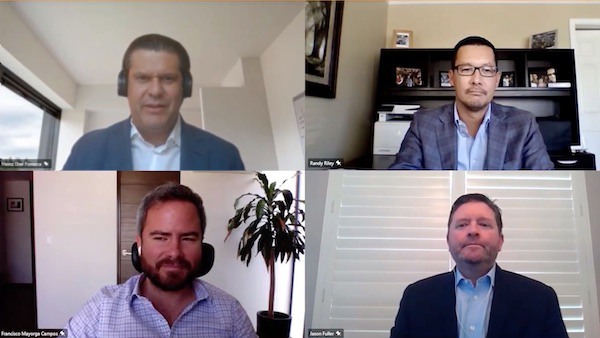This week, BASF Vegetable Seeds hosted a webinar to examine consumer trends and impacts in the United States and Mexico, and how the industry can use these trends to continue to meet and exceed the market demands in both countries. Speakers at the webinar included GoldenSun Insights Co-owners Randy Riley and Jason Fuller, as well as Francisco Mayorga, who is the Deputy Director of ANG Group. The panel was led in discussion by Heinz Ebel Fonseca, Consumer and Customer Manager Americas for BASF Vegetable Seeds.

Packaging and sustainability
The first topic that was addressed was the demand for increased sustainability and how that has impacted the retail space. “There is definitely an interest in recyclable, compostable and biodegradable packaging from the consumer, but it’s important to consider the attitude versus the behavior for this trend,” says Riley. “Many consumers like the idea, but ultimately the question is are they willing to buy it if it costs more than conventional packs.”
Mayorga explains how this trend is playing out in Mexico right now: “It is starting to gain more ground, the government is trying to enforce a reduction of the use of plastic bags, but there is a lot of resistance to that. There is definitely a longer way to go in Mexico with regard to sustainability than there is in the US. The main issue is that the demand has to come from the consumer, and we are seeing a slower evolution process toward sustainability from the consumers here. One main contributor to this is the price: consumers in Mexico are less willing, and often less able, to pay extra for this ‘environmental fee,’ and consumers are more focused on pricing.”
Growth (or lack thereof) of organics
Organics have continued to grow in popularity with consumers in the United States. “There’s no slowing down for this trend. Organic leafy lettuce, carrots, and herbs will go on to exceed 50% of sales of their categories and are growing 3-5 times as fast as their conventional counterparts. There are some products that will likely never reach 30% of their category, but in general, it is estimated that the organic vegetable category will make up 33% of vegetable sales by 2030,” Riley says.
In Mexico, this trend is much smaller, Mayorga shares. “Mexico is still a small market for organics and the current crisis will only slow down the growth. Less than 10% of people are buying organics in Mexico, and the top three most popular organic products are eggs, honey, and then in third place are berries and lettuce. One of the issues contributing to the slow growth is a lack of regulation from authorities. Consumers need more certainty, and there needs to be better regulation and enforcement of what is, and what isn’t, organic. Additionally, it is important to note with some people living below the poverty line, there will be a bigger focus on price.”
Focus on flavor
The consumer’s focus on flavor has also increased tremendously over the years in the United States. Riley says: “There has been a real push to focus on flavor to drive consumption. This can be seen in multiple categories, such as grapes, sweet corn, melons, and peppers. Retailers want to differentiate themselves from their competitors and are working more closely than ever with the seed industry to have a more collaborative approach and to create flavorful experiences for the consumers.”
Fuller adds: “The bottom line is that consumers want better flavor experiences. If you look at grapes as an example, the category has seen steady growth over time but prior to that growth consumption was quite flat. The demand started to increase as new varieties were introduced into the market. On a different note, you can also see that growth increased when the pouch bag was introduced – and grapes were one of the first items to step into this pouch bag space. This increased consumption both because it was easier for consumers to grab the bags and because it lowered shrink for retailers.”
Ecommerce challenges
No discussion of current consumer trends can skip over the enormous growth of ecommerce. “Ecommerce is here and it’s here to stay,” Fuller says. “Research found that within the next five years, 25% of sales will be through ecommerce. There are a few challenges that come with this. The current lack of impulse purchases through the online platform, for example. Another challenge is branding; the bigger retailers often put general produce items on their ecommerce platforms to prevent that consumers select a specific brand that could be sold out – which would then lead to a negative shopping experience for the consumer because the product they selected was unavailable. So, while this is a challenge, it is also an opportunity to expand the branding through these platforms by working closely with the retailers to solve this.”
There are also additional costs to ecommerce compared with regular in-store shopping. Riley explains: “There are higher operational costs associated with the ecommerce, because retailers have to pay employees to do the shopping for the consumer. The business hasn’t grown significantly enough to make up for that. Still, we can see that ecommerce is the future, so solutions will be found for this.”
In Mexico, the ecommerce platform has grown too, though there is still a significant number of consumers who prefer in-store shopping or visiting street markets. “We have seen the development of new websites to support the ecommerce trend, and consumers are adopting new habits in their shopping. Still, street markets remain important for the consumer here, especially as store prices rise. In street markets, consumers can find cheaper products, but it does pose worries about the health implications in the pandemic,” Mayorga concludes.










